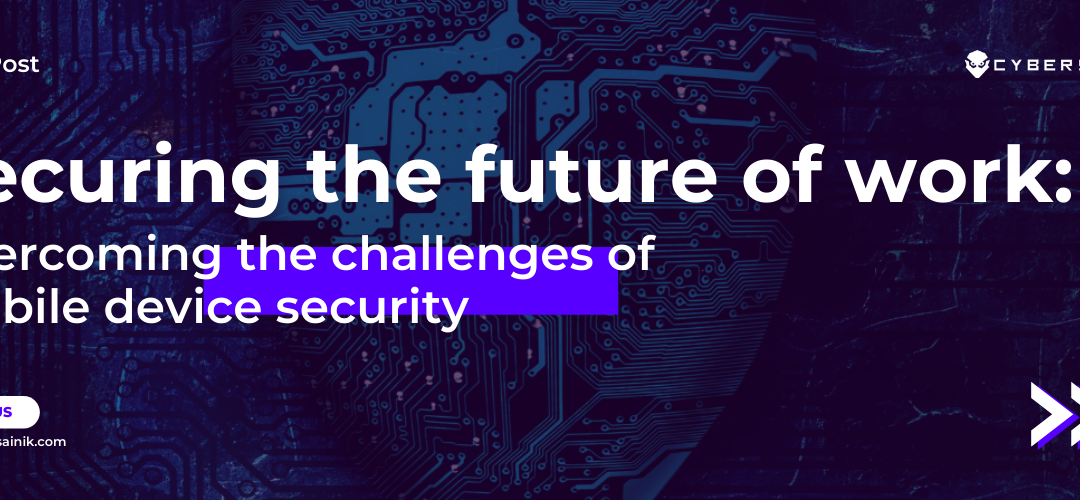Today’s workforce uses tablets, laptops, and smartphones to deliver the company’s objectives. While this changing landscape is ideal, it has also provided a fertile ground for cyberattacks.
Cybercriminals exploit vulnerabilities in mobile devices and can easily access individual or company’s sensitive data. To mitigate these risks, companies must secure their network, including any mobile devices attached to it.
Security Risks of Mobile Devices
Mobile devices are susceptible in different ways than desktop computers. Since people go with their phones or laptops everywhere, they are exposed to several potential threats. Here are some of the vulnerabilities of mobile devices.
1. Unsecured Wi-Fi
Remote work access has enabled employees to use their homes, coffee shops, or any other public place as their office. Sometimes, they can use mobile hotspots or free Wi-Fi to save their data plans or bandwidth.
Unfortunately, free Wi-Fi networks are not often secured and carry serious risks. Hackers can use man-in-the-middle attacks to intercept vital data and cripple a business.
2. Malware
Hackers send malicious codes to mobile devices through rogue programs installed from third-party sources, links, and spam. Trojan malware can then spread to other devices on the company’s network and expose it to hackers.
3. Spyware
Unlike malware which hackers use to take over a network or system, spyware sneaks into the network, gathers data, and sends it to a third party. A company may not be aware of the attack until it is too late.
4. Social Engineering
Phishing is a common social engineering attack. This attacks tricks executives r employees into disclosing information that the hackers can use to access secured servers and databases.
5. Physical Access and Poor Cyber Hygiene
A criminal can grab an unattended mobile device and access a secure network. Even the best anti-virus software and intrusion-detection system are useless against this attack. Also, weak or simple passwords are easy to crack, putting critical information at risk.
Cybercriminals use programs that can formulate passwords from personal information. Once experienced hackers have a mobile device, they quickly bypass passwords or lock codes.
6. Wrong Session Handling
Several apps have a system that allows people to perform different functions without re-confirming their identity. Sometimes, users log into an app, including company apps, and close it without logging out, leaving it “open” to hackers. Cybercriminals can use this loophole to penetrate the app and access a company’s data.
7. Insider Attacks
A disgruntled or ill-intentioned employee can use mobile devices to access a company’s network and steal valuable information. They can sell the information to others or inflict damage on their employer.
CYOD, BYOD & COPE
Companies use three main approaches when allowing employees to use a mobile device for business functions.
1. Choose Your Own Device (COYD)
In this approach, a company provides its employees with a list of approved devices. The devices come pre-installed with business software and security. However, the device will belong to the employee.
2. Bring Your Own Device (BYOD)
This allows employees to use their mobile devices for business purposes. Though this approach saves the company up-front costs, ensuring the security of the devices can be challenging. Since employees can use different operating systems and versions, compatibility and security issues will always pop up.
3. Company Owned, Personally Enabled (COPE)
In the COPE strategy, the company issues employees with secure mobile devices but still allows personal use. The challenge is that several people prefer a particular operating system. They can dislike the company-owned mobile device.
How to Protect Mobile Devices
Regardless of your approach, you must take additional security measures to protect your data. Some of these measures include:
- Security Training for Employees: Human error is one of the leading causes of cyber insecurities. To mitigate this risk, have mobile device security training programs to teach employees how to protect their devices.
- Have Device-Based Access Policies: Implement various policies to secure your data. A policy stating that only known devices managed by company endpoint management tools should access the network will help improve safety.
- Mobile Device Security Audits: IT teams, especially for companies using the CYOD or COPE approach, should audit the employees’ mobile devices to ensure the security measures are up to date and are working as they should. Audits help in detecting vulnerabilities and can remove malware infections.
- Secured Containers: The IT team can use part of a mobile device’s memory or internal storage to store sensitive data. Sandboxing or securing a small area reduces risks, and a company can sandbox an entire application, file folders, or individual files. They can also use virtual phones to completely separate smartphone services within the same device.
Final Word
Due to increased cybersecurity measures in the corporate world, criminals can no longer easily infiltrate a network using the front door. They are now trying the back door and can hack a network through mobile devices. To stay safe, companies must secure any mobile device with access to its network or data.
To learn more about mobile device security and how to keep your company safe, contact us today and schedule a free consultation with our cybersecurity experts here at Cyber Sainik.




